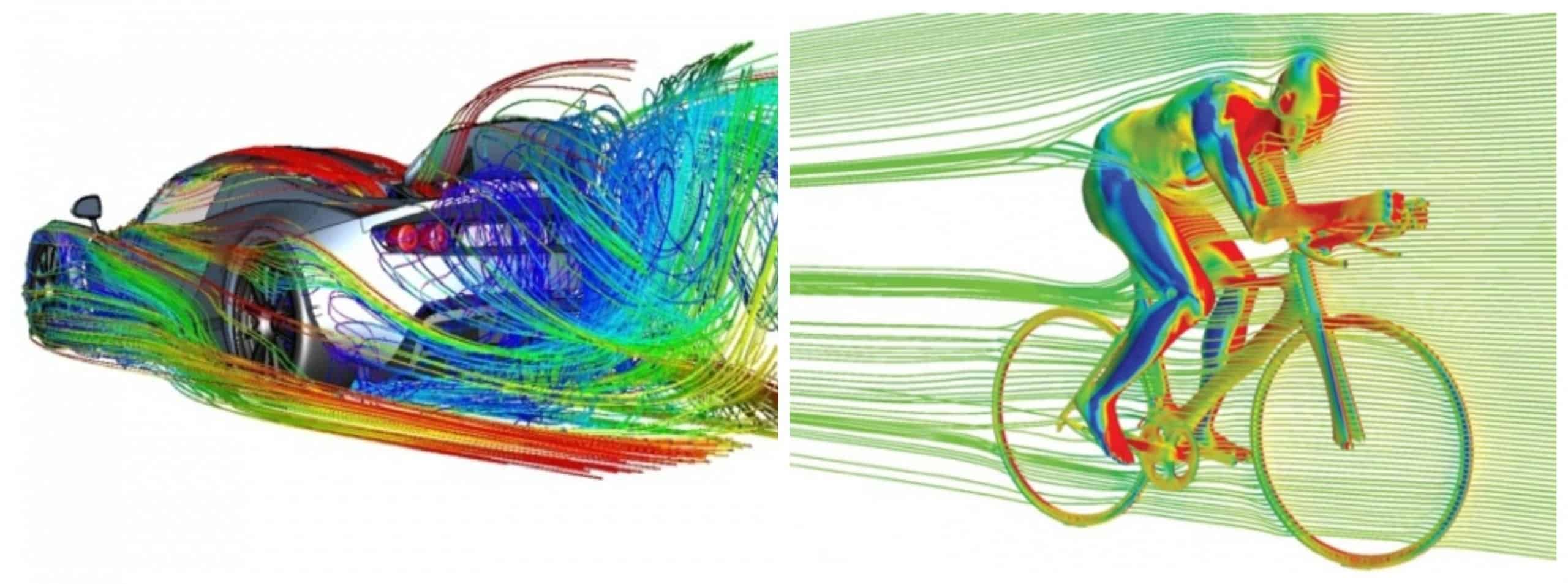What is aerodynamics?
What is aerodynamics and why we need it
 What is aerodynamics? ‘Fluid-dynamics’.
What is aerodynamics? ‘Fluid-dynamics’.
Aerodynamics is a science (part of “fluid dynamics” field) that studies the flow of a gas (mainly air) interacting with a solid body. It is defined “external” if it analyzes the flows around solid bodies (in the aeronautical and automotive fields, but also in civil engineering with the study of the wind on bridges or large buildings), while “internal” if it deals with flows inside the bodies (for example the flow in the engine, or in air conditioning systems). This is only the first article about, for more readings, check here.
What aerodynamics does.
This interaction allows the formation of a force, crucial for the development of vehicles such as planes or racing cars. In particular, this aerodynamic force tends to raise the body (i.e. airplane) with which it interacts or to lower it (i.e. racing car): in such cases we talk about lift, or the vertical component of the aerodynamic force acting on a body. However, while in the first case the lift is positive, in order to allow the plane to take off and fly, in the second case it is negative (downforce) in order to crush the car on the ground and increase its adhesion to the road.
What is aerodynamics: the goals of aerodynamicists.
From what has just been explained, it is clear that the study of aerodynamics spreads firstly on aircraft allowing it – obviously – to fly, and then on land vehicles to improve its performance, nowadays to progress “in parallel” in order to find solutions increasingly effective in terms of speed, handling and, last but not least, the reduction in consumption. Aeronautics, in fact, is an applied science that studies the physical laws which imply flying in the atmosphere of aircraft and their construction techniques. Anything that moves in the air is called aerodynamics. The air, being a fluid, has its own density and any aircraft is designed not to cross but to move a mass of air so that it maintains a certain balance by moving from one point to another.
What is aerodynamics: the research devices.
Leaving aside the first studies that date back to the Renaissance, experimentation on the resistance of bodies in the air began in the eighteenth century. Only the development of aviation in the twentieth century extended research in this field, first with theoretical experiments, then on models and parts of aircraft, then with tests on stationary bodies in a moving fluid. The latter practical procedure is that of the aerodynamic tunnel, or wind tunnel, which allows to reproduce the conditions of interaction between body and air.
What is aerodynamics: CFD and wind tunnel.
In recent years, however, it is the computer that regulates the research and aerodynamic design phases, analyzing with mathematical models every aspect of the pressure distributions determined by the wind on the various components and parts of the aircraft, typical flight phenomena that cannot always be studied in tunnels at because of the high speeds reached today and the considerable size of the planes themselves.




